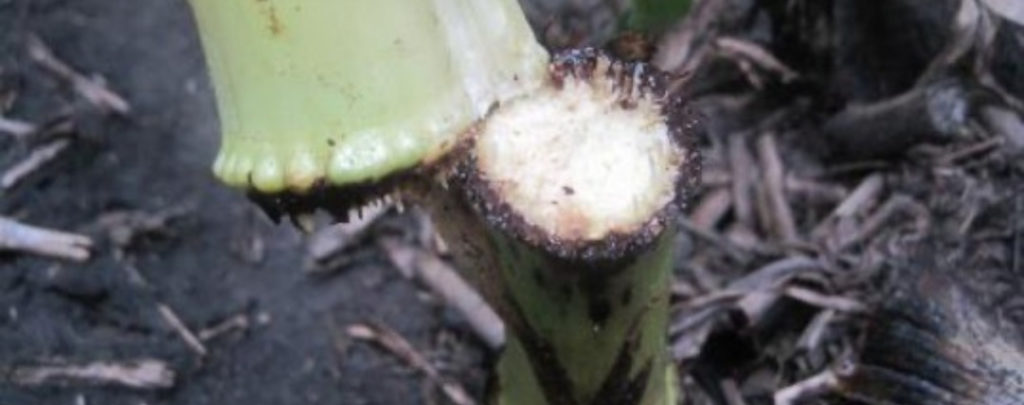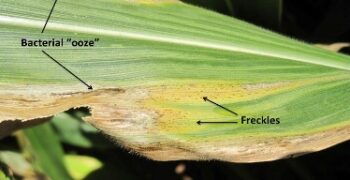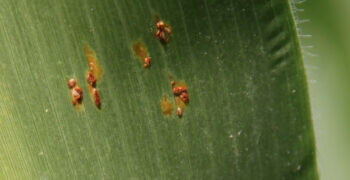Symptoms:
Physoderma brown spot symptoms include infected leaves with many small round spots that are dark purple to black in color. These spots usually occur in wide bands across the midrib of the leaf or near the collar on the backside of the leaf. In more severe cases yellow bands of infected tissue will be present on the leaf.
Physoderma stalk rot can infect one of the first three nodes above the soil surface. It will appear as a black discoloration on the node. Nodes infected may snap, causing the plant to fall over.
Life Cycle:
The fungus can survive as sporangia for two to seven years in the soil and crop residue. When the whorls fill with water due to heavy rains, excessive irrigation, or dew that stays on the leaves late into the morning the sporangia germinate and produce zoospores that can infect the meristematic tissue of the plants. Younger plants are more susceptible but build resistance with age.
Scouting:
Corn plants are most susceptible to Physoderma brown spot or stalk rot infection between V5 – V9. Symptoms will likely begin showing on the leaves of the plants around tassel time (V12-R1). Stalk rot scouting should be done around R3-R5, remember to look for black discolored lesions on the first three nodes above the soil surface.
Management Practices:
- Crop rotation or tillage will help reduce the fungal populations that reside in crop residue.
- Fungicides may have some control of Physoderma brown spot, but not total control.



